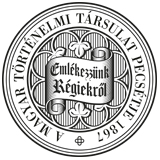Századok – 2014
FIGYELŐ - Krausz Tamás: Hogyan írná át Ungváry Krisztián a nagy honvédő háború történetét? I/201
FIGYELŐ 227 gyilkosság történt, számos olyan, amely a holokauszt tárgykörébe tartozik. Mai tudásunk szintjén határozottan csak annyi állítható, hogy a magyar katonák részvételével minimum 180 000-200 000 ezer szovjet civil állampolgár és hadifogoly elpusztításáról beszélhetünk.75 Az itt számításba nem vett területek további kutatása nyilvánvalóan differenciálni fogja a képet. A magyar megszálló katonaság részvételével elpusztított szovjet áldozatok felső számhatáráról egyelőre találgatni sem érdemes. Sokkal fontosabb kérdés ennél, hogy ne térjünk vissza mutatis mutandis a hidegháború korszakának ideológiai és historiográfiai örökségéhez. Nem kötelező, hogy a történész az új korszak két rossz véglete, a globalista univerzalizmus és a nacionalista fundamentalizmus között válasszon. Tertium datur... a harmadik lehetőség csak annyit jelent, hogy nem kötelező a tudomány helyett — eltávolodva a sine ira et studio szabályától — valamely politikai kurzus és legitimációs hatalmi szükséglet kielégítésének szolgálatába szegődni. HOW WOULD KRISZTIÁN UNGVÁRY REWRITE THE HISTORY OF THE GREAT PATRIOTIC WAR? by Tamás Krausz (Abstract) The article analyses those methodological foundations, factual errors and distortions and weaknesses inherent to the critique of Krisztián Ungváry which clearly reflect his attitude towards the Soviet sources. Ungváry denies the participation of the Hungarian occupying forces in Nazi genocide. He frequently mistakes causes for consequences and the other way round. In total subjection to his aim, he tries to question the authenticity of original Soviet documents published for the very first time, suggesting that German and Hungarian documents have more intrinsic value that the Soviet ones which give the impression of a real genocide. It is, however, an undeniable fact in the light of Soviet, German and Hungarian documents that the Hungarian occupying forces not only assisted in the systematic extermination of the Soviet population, the communists, as well as of the patriotic masses of the Russian, Ukrainian and Belarussian population, but also killed Soviet prisoners of war, women and children and participated to rapes and tortures. In addition to this, the Hungarian trooops gave active support to the Holocaust which took place on Soviet territory, and the mass murders committed against the Jews are also underpinned by Hungarian documents published in the book. Ungváry blurs the political, moral, ideological and cultural distinctions which clearly separate the murderers from their victims, an approach which is based on a politically biased adoption of the cold-war theory proclaiming the identity of fascism and communism. 75 Vö. A magyar megszálló csapatok... 14., 31., 499.
